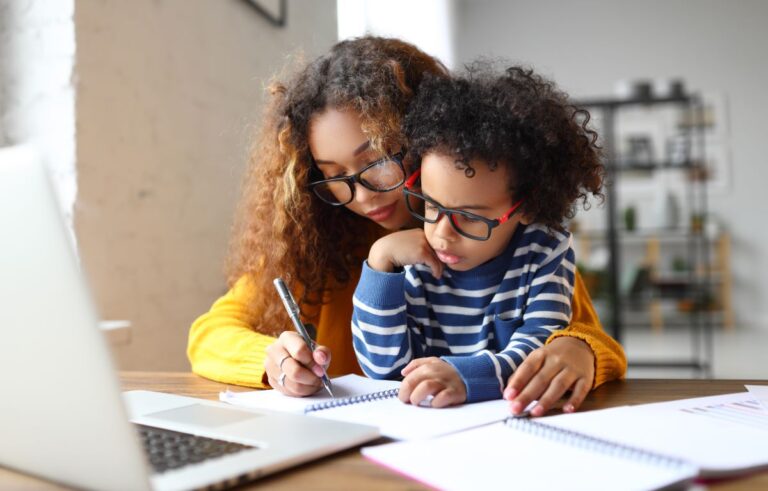Education Reality Check: Are Schools Prepping Kids for Life or Just Tests?
Today’s education system faces a critical question: Are we truly preparing our children for the future, or are we just teaching them to pass tests? Here’s a critical look at whether our schools are equipped to handle the demands of the 21st century.
1. Outdated Educational Model

Many argue that the current school system is outdated, rooted in 20th-century practices that no longer serve our rapidly changing world. This antiquated approach focuses more on rote memorization than on critical thinking and problem-solving.
2. Lack of Real-World Skills

A significant number of students and employers believe that high schools aren’t providing enough real-world skills. Students often feel unprepared for life after graduation, lacking the practical abilities needed in modern workplaces.
3. Emphasis on Standardized Testing

The heavy focus on standardized testing limits teachers’ ability to offer a well-rounded education. This approach often neglects essential skills like creativity, critical thinking, and emotional intelligence.
4. Mental Health and Social Skills

Schools’ focus on academic performance often comes at the expense of students’ mental health and social skills. The pressure to perform can lead to anxiety, depression, and a lack of essential social-emotional learning.
5. Project-Based Learning

Programs like Iowa BIG, which incorporate project-based learning, show that students gain valuable real-world experience. These initiatives often provide more meaningful learning opportunities compared to traditional methods.
6. Collaboration and Teamwork

Developing collaborative skills in school is crucial for future success. However, traditional educational settings frequently fail to foster teamwork, leaving students unprepared for collaborative work environments.
7. Diverse Learning Experiences

Partnerships with local businesses and community organizations can offer students diverse learning experiences. These collaborations help bridge the gap between academic knowledge and practical application.
8. Critical Thinking and Problem-Solving

Employers highly value critical thinking and problem-solving skills, yet these are not sufficiently emphasized in schools. The current system tends to prioritize test scores over the development of these crucial abilities.
9. Technological Integration

While technology is present in classrooms, it is not always used effectively to enhance learning. Schools need to integrate technology in ways that prepare students for a tech-driven future.
10. Vocational Training

There’s a significant gap in vocational and technical training in high schools. Preparing students for specific careers, especially in high-demand fields, is essential for future readiness.
11. College Readiness

Declining college enrollment rates suggest that students and families are questioning the value of higher education. High schools need to better prepare students for both college and alternative career paths.
12. Innovative Education Models

Schools adopting innovative models, like the XQ Super Schools, demonstrate the benefits of non-traditional approaches. These schools combine academic learning with practical skills, better preparing students for the future.
13. Teacher Support and Development

Supporting teachers through professional development and improved working conditions can enhance student outcomes. Educators need the resources to create engaging and effective learning environments.
14. Purpose of Education

The debate about the purpose of education is ongoing. Schools must shift towards preparing students to be adaptable lifelong learners, rather than just test-takers.
15. Equity in Education

The current system often fails to address educational inequities, leaving disadvantaged students behind. Schools need to provide equal opportunities for all students to succeed.
16. Life Skills

Teaching essential life skills, such as financial literacy and time management, is crucial for students’ future success. These skills are often overlooked in traditional curricula.
17. Student Engagement

Engaging students through voice and choice in their learning process can lead to better outcomes. When students have a say in their education, they are more motivated and invested.
18. Real-World Contexts

Incorporating real-world contexts into curricula helps students understand the relevance of their education. Schools need to connect academic content to practical applications.
19. Flexibility and Adaptability

The rapidly changing job market requires students to be flexible and adaptable. Schools must focus on developing these traits to ensure future success.
20. Community Involvement

Involving the community in education can provide students with broader perspectives and valuable connections. Schools should foster strong community partnerships.
21. Holistic Education

A holistic approach to education balances academic, social, and emotional development. This comprehensive approach is essential for preparing students for future challenges.
The Adults of Tomorrow

In conclusion, while schools are striving to prepare students for the future, there is a significant gap between current practices and the skills needed for 21st-century success. Addressing these issues requires a shift from test-focused education to one that emphasizes real-world skills, critical thinking, and holistic development.
Toxic Talk: 21 Phrases to Never Say to Your Kids

Are you worried about the impact of your words on your child’s well-being? Let’s tackle 21 phrases that might be causing more harm than you realize. Toxic Talk: 21 Phrases to Never Say to Your Kids
Breaking Ties: Recognizing When It’s Time to Go No-Contact with Parents

Deciding to go no-contact with a parent is a profound, often painful choice, but sometimes it’s necessary for personal well-being. Are you grappling with the decision to distance yourself from a toxic parental relationship? Breaking Ties: Recognizing When It’s Time to Go No-Contact with Parents
Stop the Stereotypes: 20 Gender-Based Comments Kids Don’t Need

It’s time to challenge traditional narratives that limit kids’ potential. Here are gender-specific phrases and ideas to avoid, fostering a supportive and open-minded environment for the next generation. Stop the Stereotypes: 20 Gender-Based Comments Kids Don’t Need
Featured Image Credit: Shutterstock / Drazen Zigic.
For transparency, this content was partly developed with AI assistance and carefully curated by an experienced editor to be informative and ensure accuracy.







